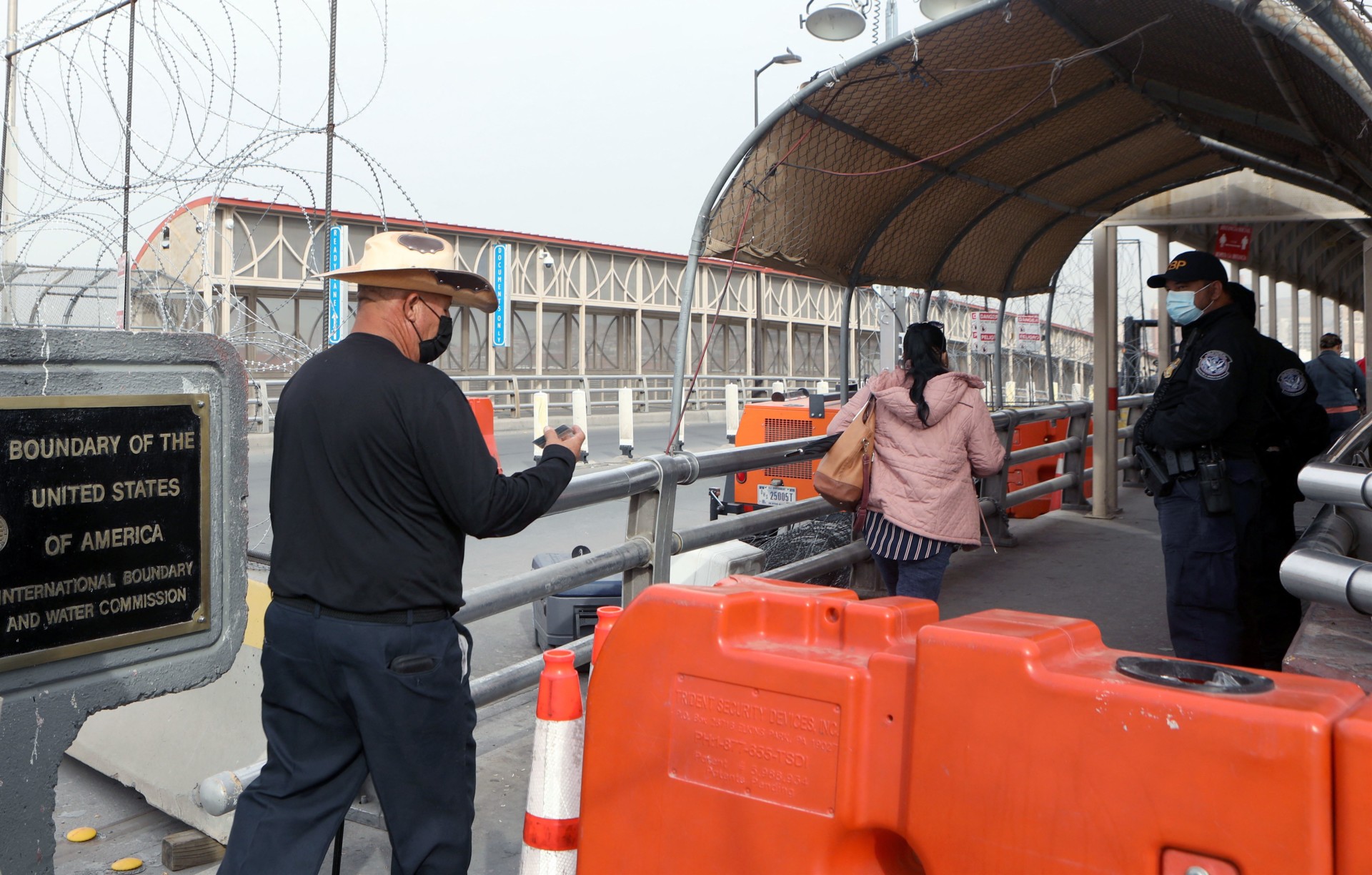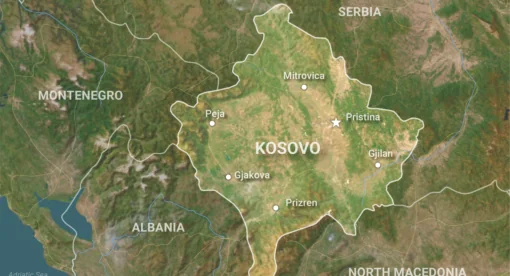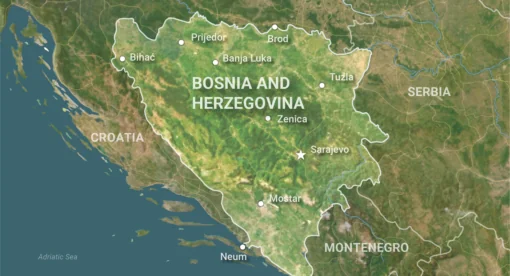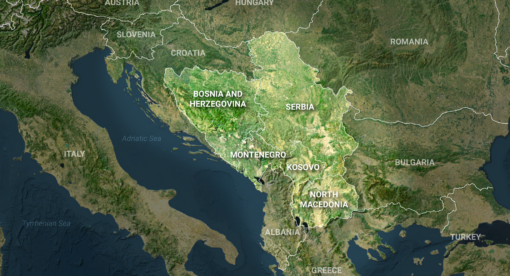Climate change is a driving factor for both increased migration and the spread of infectious disease.
The U.S.-Mexico border is one of the most crossed in the world. Approximately 350 million crossings are documented, with another estimated 10 million undocumented crossings annually. Most of the immigrants crossing the border are from Central and South America, Mexico, and Asia, with smaller numbers from Africa, the Middle East, the Caribbean, and Europe. Climate change is a driving factor for both increased migration through the region and a heightened risk of infectious disease transmission and emergence.
However, decision-makers, scientists, and NGOs lack systematic and updated information that links together climate change, migration, and infectious diseases’ regional dynamics, hampering efforts to develop effective, sustainable responses that are respectful of human rights. The spread of COVID-19 has only heightened the importance of these interconnected events in a globalized and changing world and offers examples of how these emerging problems could challenge traditional forms of national governance and security in the near future.
Climate Change and Migration
Climate change links with myriad stressors resulting from global changes in both natural and human systems to compound exposures of vulnerable populations. Communities in Mexico and Central America, with a long tradition of sending immigrants to the U.S., are already experiencing threats of drought, hurricanes, and other climate-driven hazards, but most analyses lack an explicit focus on climate change as an underlying driver of this international migration, instead prioritizing socio-economic factors. While firm data is scarce, some case studies suggest the importance of climate-driven migration. Honduras has become a leading country of origin and is currently classified as one of the countries most affected by extreme climatic events by the Global Climate Risk Index. In Mexico, increasing heat and drought also predict migration flows to the U.S.
International migration is one of the most frequent adaptation strategies when communities cannot guarantee local livelihoods and may follow loss of food, water, and human security. Both acute migration flows due to disaster and slow-moving trends such as a long-standing drought may accelerate migration. Interrelated international business policies, including weak regulatory institutions, can also drive migration when communities lose access to natural resources as large-scale extractive industries (i.e., mining and agribusiness) monopolize local resources. The pathway for climate migration is therefore mainly through negative impacts on livelihoods, with both direct, observable effects and indirect effects by exacerbating pre-existing vulnerabilities and inequities in communities.
Climate Change and Disease
Importantly, climate migrants are often the most vulnerable in their countries of origin, lacking access to services and social security, including health services. The risks of infectious disease in many countries of origin are poised to shift as climate change continues. Disease vectors such as Aedes aegypti mosquitoes and triatome bugs (commonly known as kissing bugs) are projected to expand farther northward, and their seasons will potentially lengthen, increasing the period of vulnerability in many regions.
Concurrent with shifts in average climatic norms, weather extremes are expected to increase in frequency. The role of extreme weather events is linked to increases in diarrheal diseases in the border region and globally, and extreme precipitation is linked to increased mosquito-borne disease transmission. Endemic communities at the origin for migrants may experience infrastructure decline, reduced clean water and sanitation, more crowded conditions due to displacement, and reduced disease surveillance and control as they experience compounding natural disasters. These factors may increase background levels of infection in migrant populations and travelers unless investment in global health infrastructure is prioritized.
Despite theoretical links, there is a lack of concrete evidence related to the interplay between migration and infectious disease risk in the context of climate change. Climate change’s influences on infectious disease risk in migrant populations will be variable. Both long-term changes in climate and more acute shocks such as natural disasters could drive migration to the United States. Each of these will have a different risk profile in terms of infectious disease transmission, and migrant health will be greatly influenced by both the resources and support provided during their journey to the U.S. and the support received when reaching the border.
Since 2018, migrant caravans have increased in number and frequency, crossing by land from the southern Mexican border to the U.S. This can exacerbate transmission of respiratory and diarrheal diseases due to more crowded conditions along the migratory routes. Most migrants have the U.S. as their primary destination, with Mexico as a transit country, though asylum requests in Mexico have increased in recent years. Health impacts of current climate-related migration trends on the U.S.-Mexico border are of interest not just to the U.S. but also to Mexico as a potential destination.
Accurate Data is Key
It is fundamental to have an accurate comprehension of endemic infectious diseases and priority health conditions within sending countries. Reports indicate most migrants are relatively young and healthy, and comparisons with residents indicated no differences in underlying health risks. The chief complaint during the migration journey has been acute respiratory infections. Yet health profiles from the CDC suggest Central American minors had higher levels of parasitic infections such as chagas disease, soil-transmitted helminths (parasitic worms), and taeniases (tapeworms). Transmission of these into local communities requires the presence of competent vectors that may become more common as they establish new geographic ranges under a warming climate.
Inefficient processes at the border often necessitate migrants setting up temporary shelter in environments that are not equipped to provide clean water, sanitation, food, or protection from disease vectors. These settlements can last for weeks or months and can become extremely crowded, raising the risk of outbreak. Those that do cross the border may be detained in facilities in the U.S. with inadequate infection prevention strategies. Outbreaks in detention facilities during the current pandemic have been common, but they also occurred prior to COVID-19, including a significant outbreak of mumps. Overcrowded conditions, in part due to long processing times, exacerbate transmission, and adequate medical attention and opportunistic syndromic screening are essential.
The potential for transmission of infectious diseases among migrants who cross the border is also influenced by U.S. health policies, particularly access to health care. Any limits on accessing health care will exacerbate possible infectious disease burden and transmission. One example of such a limit was the U.S. Department of Homeland Security’s public charge rule, enacted in 2019, which allowed the federal government to deny green cards to individuals deemed likely to be in need of Supplemental Nutrition Assistance Program (SNAP) or Medicaid benefits. The rule was removed from the federal register in March.
Nevertheless, permanent residents still have a five-year waiting period to get Medicaid or Children’s Health Insurance Program (CHIP) coverage. While certain exceptions apply, including for refugees or asylees, this waiting period severely delays access to care, making immigrants less likely to use health care resources and potentially leading to the spread of infections.
Infectious disease transmission has been used as justification to expel migrants during the COVID-19 pandemic. This coincides with a period of heightened need for asylum, and the tension between these two factors will likely continue for the foreseeable future, with infectious disease increases, reductions in infrastructure and support, and climate change-driven migration.
The U.S. Department of Health and Human Services issued an interim final rule, effective March 20, 2020, to provide “ a procedure for CDC to suspend the introduction of persons from designated countries or places, if required, in the interest of public health.” CDC Director Robert Redfield issued an Order Suspending Introduction of Certain Persons from Countries Where a Communicable Disease Exists (under Title 42 of the U.S. Code), which applied to individuals from Mexico or Canada (regardless of country of origin) “who would otherwise be introduced into a congregate setting in a land [port of entry] or Border Patrol station at or near the United States border with Canada or Mexico, subject to exceptions.” The most recent Order was issued on Aug. 2, 2021, and is currently being enacted (though subject to current legal challenge). These types of policies portray migrant communities as a much greater source of infection and risk than current residents within our borders despite COVID-19 transmission rates in the U.S. often being among the highest in the world.
Recommendations
As climate change grows more severe, any corresponding reductions in health care access and infrastructure in the sending and receiving communities will increase migrants’ vulnerability. The development of systematic indicators is needed to clarify connections between migration, climate change, and diseases to understand the magnitude of the problem and correlations for future projections. Many of the policies enacted follow a nationalistic and protectionist viewpoint, but viewing climate change scenarios with shared socioeconomic pathways shows that a nationalistic response is predicted to exacerbate the negative effects of climate change.
The U.S. response must be swift, coordinated across countries, and equitable. Global surveillance systems, cross-border communication, and climate and disaster relief must be enhanced. Systemic and culturally sensitive solutions to support adaptive livelihoods and public health infrastructure must be developed and investments reallocated to these areas. In concert, addressing the extractive culture of transnational companies is urgently needed, as this only exacerbates the pressures from climate change.
America Lutz is a researcher professor at El Colegio de Sonora in Mexico. She holds a PhD on Arid Lands Resource Science with a minor in Global Change by the University of Arizona. Dr. Lutz’s research focuses on the human dimensions of climate change adaptation, water and rural livelihoods’ security, and gendered issues of environmental change. She tweets at @americalutz.
Pablo A. Reyes Castro is a Professor-Researcher of the Center of Studies on Health and Society, at El Colegio de Sonora, Mexico. He earned a Master’s degree in Social Sciences and Health at El Colegio de Sonora, and a PhD in Epidemiology at the University of Arizona. He is a social epidemiologist with experience in the analysis of distribution and socio-environmental determinants of diseases in the Sonora-Arizona region.
Leila Barraza, JD, MPH, is Associate Professor at Mel and Enid Zuckerman College of Public Health, University of Arizona. Professor Barraza instructs a public health law course for public health and law students, and she has also provided numerous presentations at national and local conferences on a variety of critical public health law issues.
Kacey C. Ernst PhD, MPH, is Professor at Mel and Enid Zuckerman College of Public Health, University of Arizona. Professor Ernst is an infectious disease epidemiologist. Her work centers on understanding how human interactions with their environment, including anthropogenic climate change, alter the dynamics of infectious disease transmission. She has worked in the U.S.-Mexico border region for over a decade, specifically examining the dynamics of vectorborne diseases.
The views expressed in this article are those of the author and not an official policy or position of the New Lines Institute.







